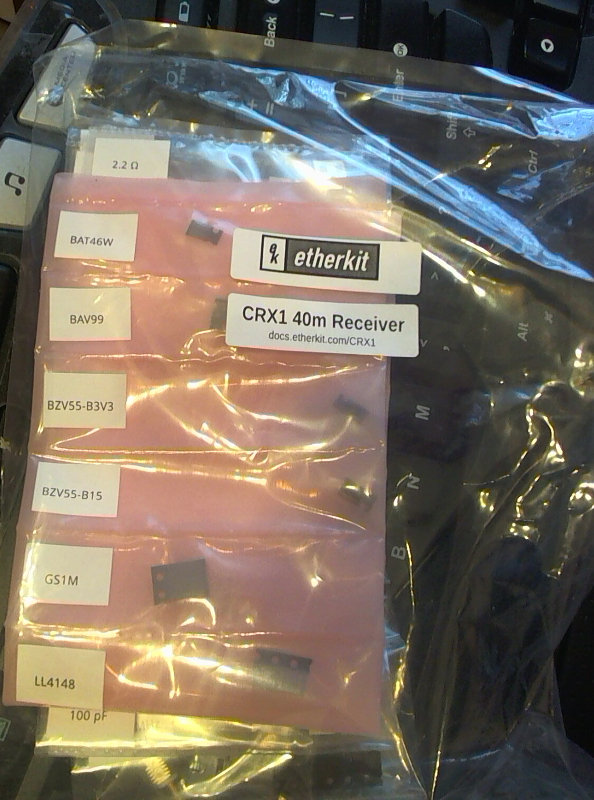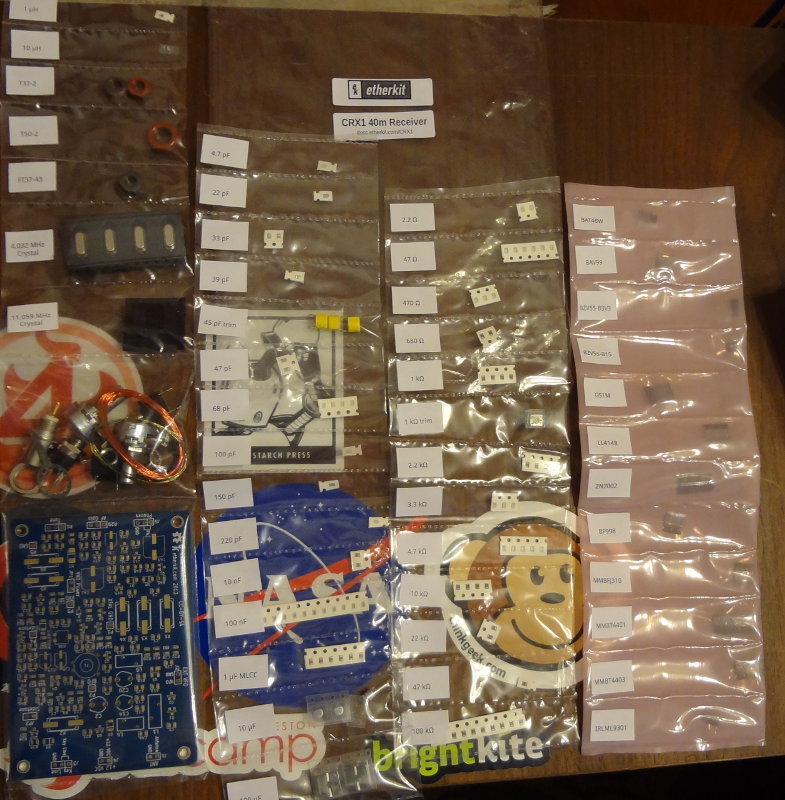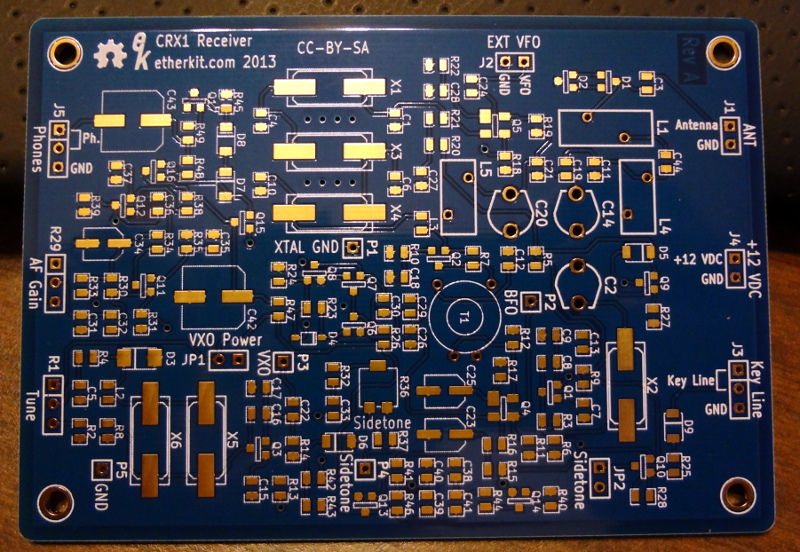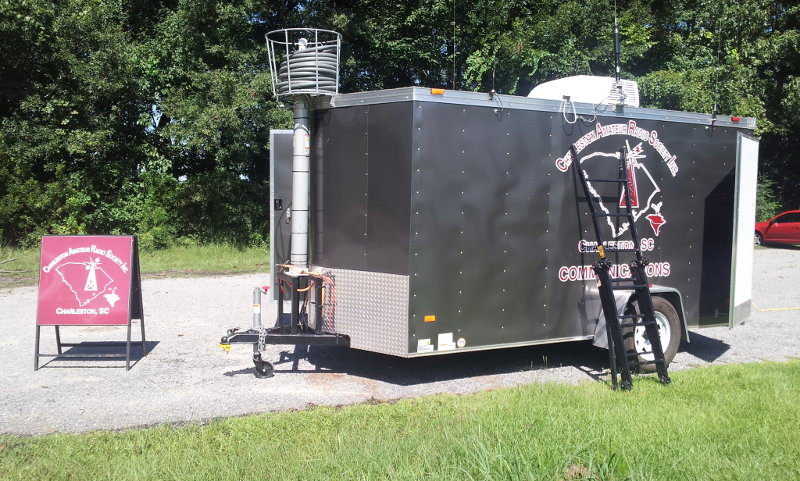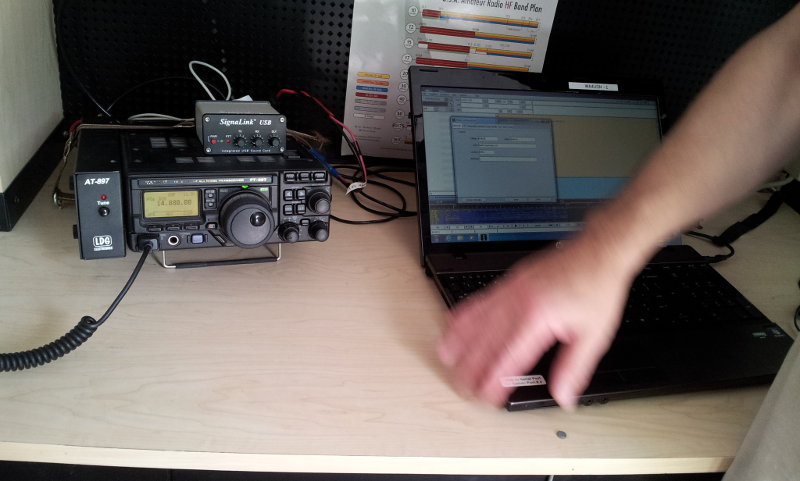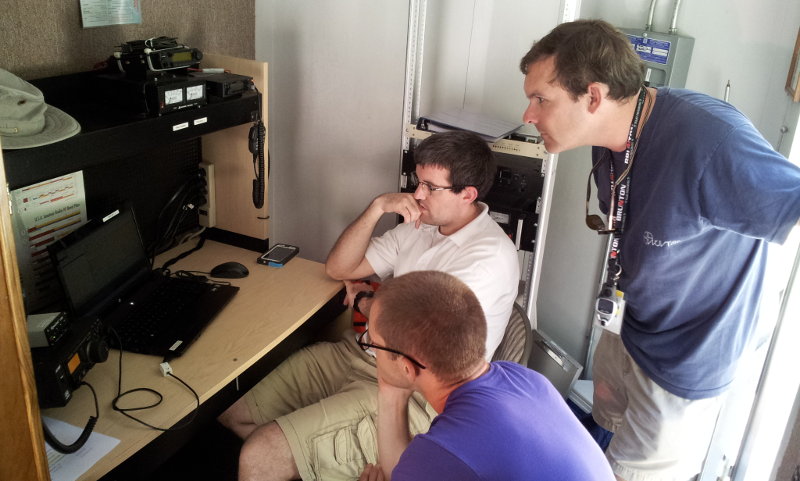Ahh, the smell of melting solder.
Started soldering the bits onto the CRX1 circuit board. After going through and taking inventory of everything and noting where everything goes, it was time to heat up the soldering iron.
Here, the power conditioner (middle right) and audio amp (upper left) stages have been completed. Haven’t applied power to the board yet. One of the people assembling a beta kit used header pins and connectors for the external parts (like the power connector, pots, etc) so I think I’ll do the same. Then I won’t have to worry about soldering temporary wires when I get around to testing things.
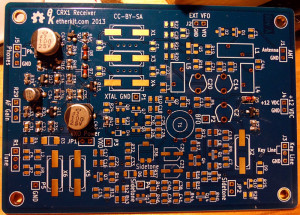
I made it half way through the sidetone oscillator stage (lower middle) before I decided to call it quits for the night.

Having everything on one side of the board definitely makes things a little easier. I don’t need to flip the board over, and the board lays flat on the table. The pieces are still pretty small, but with some more experience under my belt now, it’s not so bad. I’m starting to like working with SMT, although I haven’t quite decided if I prefer it over through hole.
While I was working, the lens from my magnifier light fell out. One of the clips had broken and the lens ended up falling out. Fortunately I wasn’t soldering at the time so it just fell into my lap and onto the ground. No breakage fortunately, but now I’ll have to figure out how to secure the lens with one of the clips missing.
Back at it tomorrow.
